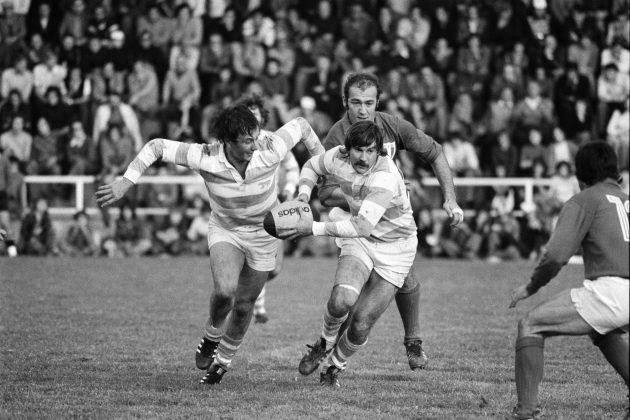We look back at how the Pumas became the power they are today
In 2001, when Argentina hosted the Rugby World Cup Sevens in seaside city Mar del Plata – a summer vacation heaven – people would gather outside the team hotel by the hundreds. Many knew little about the game and were heard asking anyone who looked like a rugby player for a ‘pink’.
“Please, please…a pink, a pink,” would be the cry from children to grandparents. They had heard that teams had something they could give away. Team pins – or the locally translated ‘pink’ – were a valuable asset if you could get your hand on one.
For three nights, the stadium was filled to capacity. That was one of many instances of Puma-mania, post Rugby World Cup 1999.
Related: Argentina Rugby World Cup squad 2023
Basically, when los Pumas – perennial underachievers in the biggest of tournaments – made it to the quarter-finals, beating Ireland with a passion and commitment that to this day makes the hairs on the neck rise, it generated an awareness for the game, the team, and some its stars like never before.
There had been an earlier Puma-mania, in 1965, when the Argentine national team went for the first time to South Africa and they beat the junior Springboks. If you explained to a millennial what communications were like then, they wouldn’t understand that there was no live coverage of the game or the tour and only weekly reports would appear in a sports magazine that had a journalist travelling with the team. As much as the world took notice, the game in the country took a big leap.

Argentina celebrate victory over Ireland, 1999 (Getty Images)
But nothing had the impact that 1999 had. Playing numbers grew and the game found itself needing to address how to best manage this new era.
A third ‘Puma-mania’ was even stronger, with playing numbers almost doubling from one year to the next.
Rugby World Cup 2007 will never be forgotten and sowed the seeds for what would happen in the future, including inclusion in The Rugby Championship and eventually Super Rugby… until Covid 19 destroyed the model.
That tournament in France had a huge impact even if social media was only in diapers then.
Only a flight away, with a team that inspired fans with their passion and the leadership of players such as captain Agustín Pichot, pin-up boy Juan Martín Hernández, Dr. Felipe Contepomi and the Adonis, Nani Corleto, the rugby fans were ecstatic, the sporting public were in awe and some players attracted a different kind of casual viewer…
A few thousand fans made their presence felt in the seven games that led to a much celebrated bronze medal. And although the tournament finished too late in the 2007 season, 2008 saw the arrival of new players of different ages.
When did rugby arrive in Argentina?
Rugby was first played in Argentina in the 1870s by British expats. It was a game with few locals involved for a few decades, but when the floodgates opened, it became a game for all.
It still carries the stigma of being a high- and middle-class sport. Neither classes are easily discovered in a country constantly going down the drain, but despite the myth, it is a sport that has opened its doors to everyone that wants to play rugby.
France 2023 could be another landmark for the game in Argentina. Playing numbers are almost on par with pre-Covid days and a good World Cup could push them to new limits.
Download the digital edition of Rugby World straight to your tablet or subscribe to the print edition to get the magazine delivered to your door.
Follow Rugby World on Facebook, Instagram and Twitter.





